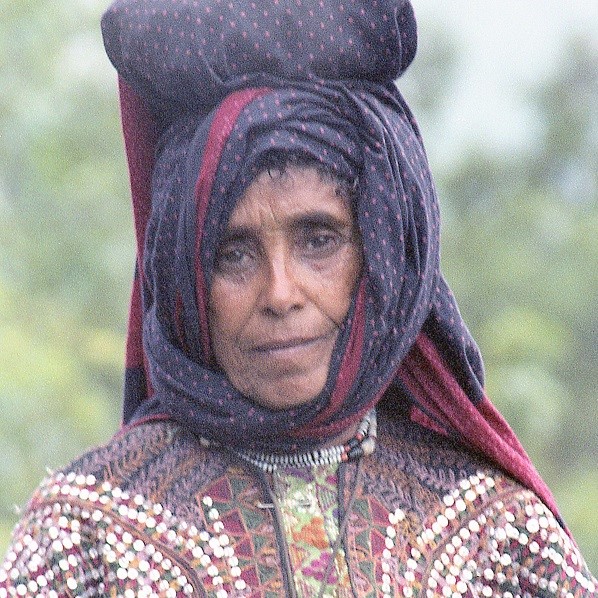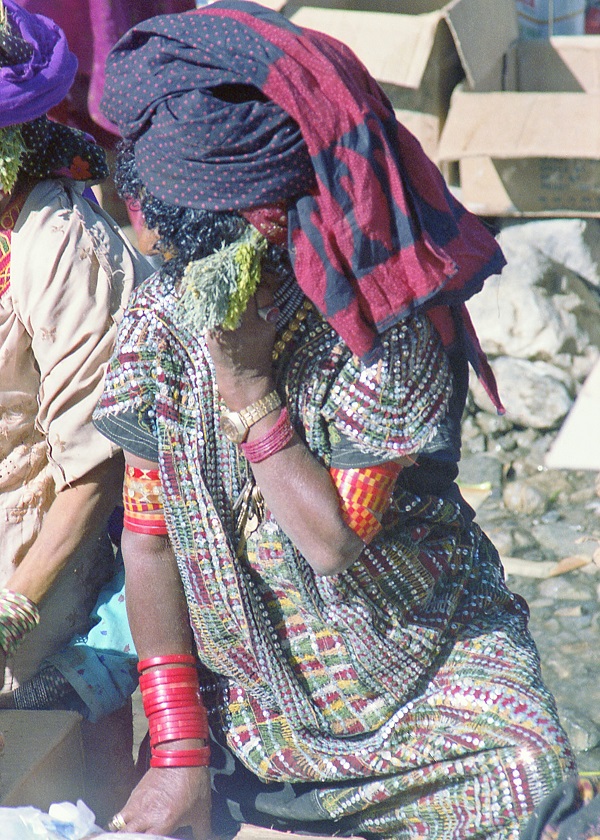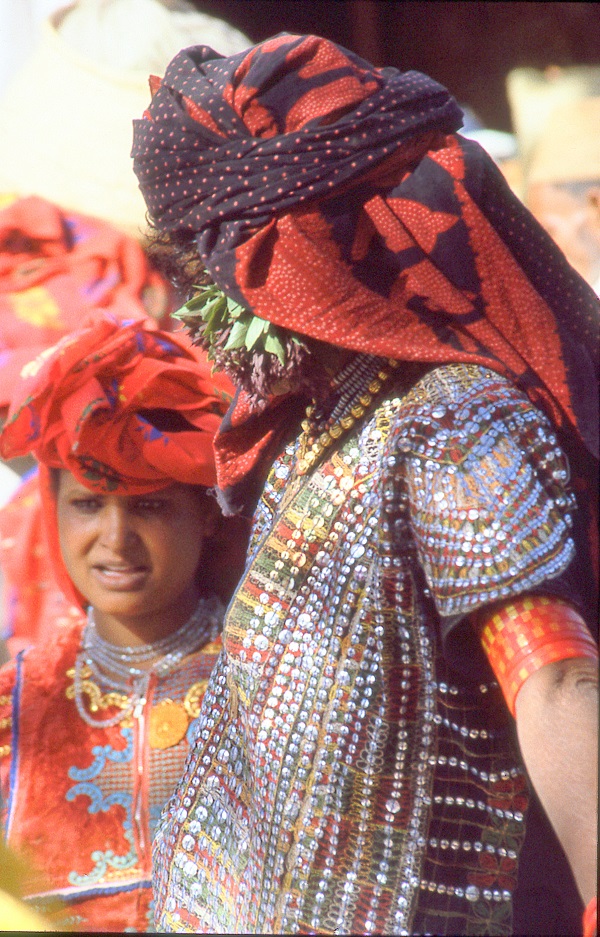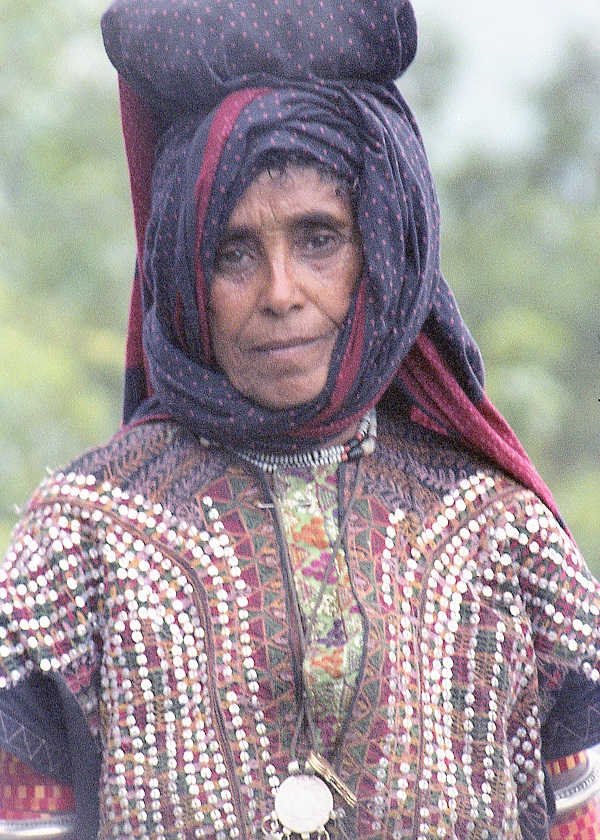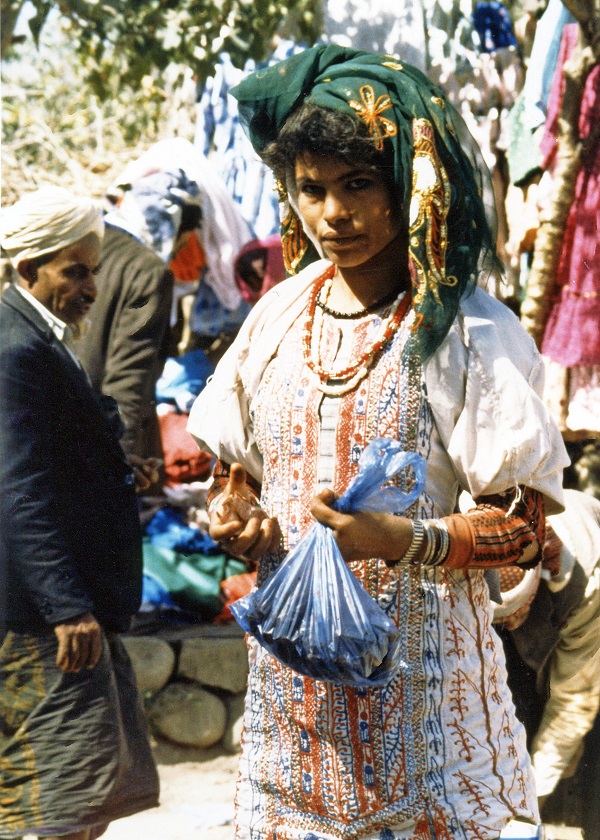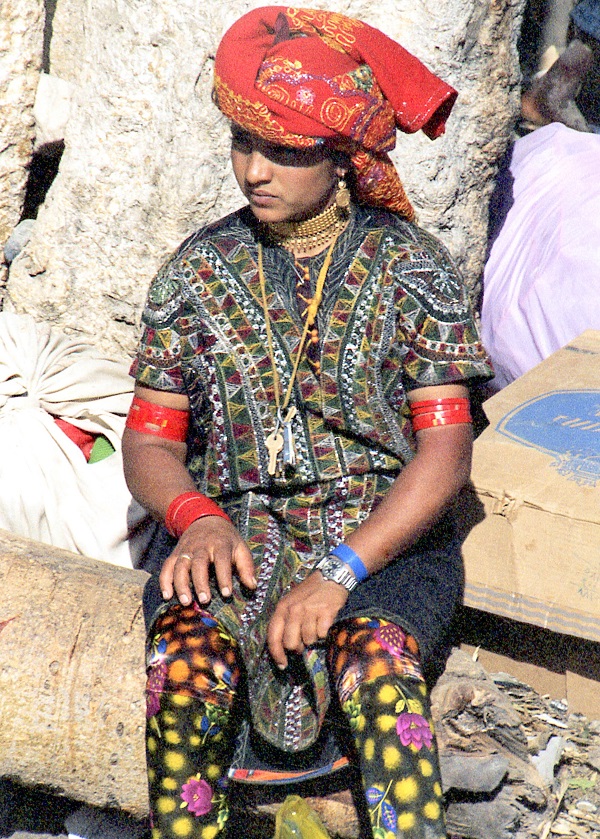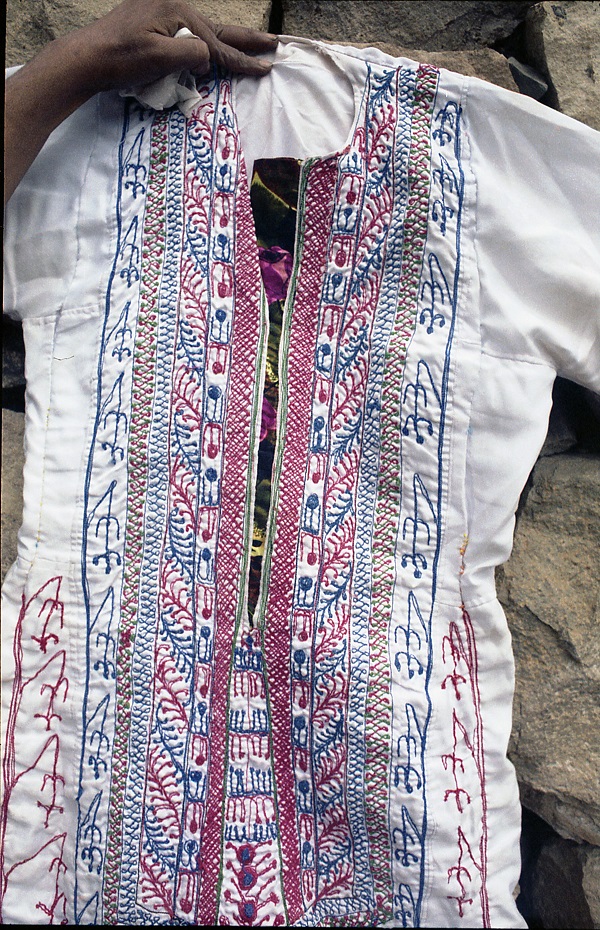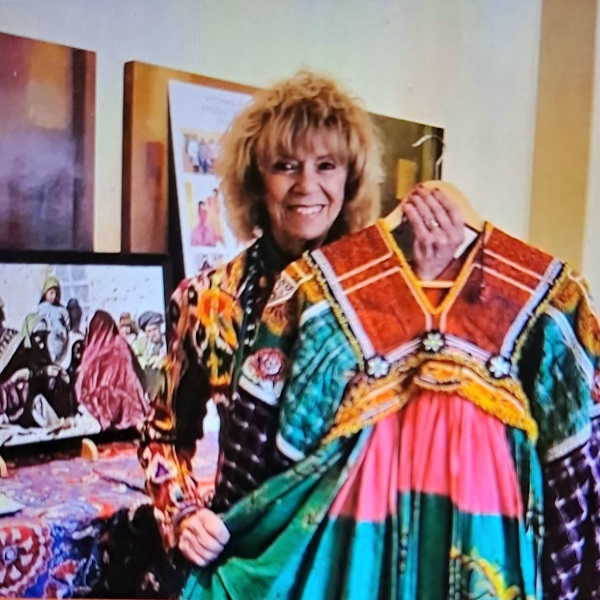This is the fourth post in a series on Yemeni dress, customs, and craft written by guest contributor Darleen Wilkerson Karpowicz, an American art teacher who lived in Yemen for five years in the early 1980s. During this time Darleen documented and studied the costume, customs, and crafts of the people she learned to love.
Jebel Habashi
In Arabic, Habashi means Ethiopia. From the summit of Jebel Habashi (7,500 feet), uninterrupted views are revealed in the direction of that country. During my stay in Yemen, only the main roads were tarmacked and the rough road turning off the main highway leading to the village of Habashi was unpaved and one needed a four-wheel-drive vehicle to attempt the drive to the top. It was an hour and a half drive to the bottom of Habashi from the city of Taiz.
The women of this region were seldom seen in larger towns, and it was by chance that I saw a woman wearing this special dress covered in silver sequins. I was able to ask her where she was from. These women did not go into Taiz as did the Sabir women as they lived further away, and they also had markets closer to home. They mostly bought and sold in these small markets and did not often venture to the more populated areas.
Much of Habashi was at an elevation ideal for the cultivation of qat and it was the dominant crop throughout the area, although subsistence farming of sorghum and maize was also practised. Dwellings in this area were grouped in small, dispersed villages strung out along the length of the unpaved road and houses were situated individually on inaccessible perches. Like most homes in these mountain areas the roofs were flat and served as a place to dry clothes, maintain a garden, as well as a spot to enjoy and take in the surroundings. The women could also be heard talking loudly to their friends across the wadis as they visited without leaving the confines of their own homes. It was a quiet secluded spot and the hustle and bustle of modern Yemeni life had bypassed Jebel Habashi and left it to its seclusion. But even in the most isolated spots of Yemen, there were small market centres, Habashi being no exception.
Habashi Dress
There were two main centralised meeting places on the mountain. The women of El Barahi were wearing a distinctive unique style of dress which appeared to be very localised in this area and did not have a counterpart anywhere else that I saw during my entire five-year stay in Yemen.
The Habashi dress was a piece of heavy black cloth, folded in half, sewn along its sides, leaving sufficient room for the arm, and it had a hole cut out for the head, enlarged to allow for a slit in the front centre of the dress. The shape and form were obtained by hiking the dress up and tucking it into black velvet sirwal pants creating a draped appearance. The most distinguishing feature of the dress was the overall burnt orange, forest green, and red machine embroidery which covered the front and part of the back with added rows of hand-sewn metal sequins covering the machine embroidery. Consequently, sequins covered the entire front and part of the back of this unique Yemeni mountain dress. The dress was very striking and from far away all one could see was silver traces of light bouncing back and forth creating a startling impression.
According to information provided by the older village women of Habashi, this style of dress was worn by them dating back to the Imam’s time. The dress was their customary attire. They felt that although the younger women dressed in newer renditions of the sequined dress, that they as they got older, would return to the ‘traditional dress with the sequins. That remained to be seen as no doubt once a radical change in dress style is made it is unusual to turn back and start wearing older style clothing. I had already seen a new style of dress replacing the sequined dress when I made my first visit to Al Barahi, so, like all people these women were holding on to their beloved dresses and were hoping that the younger women would start wearing them again.
Habashi Jewellery
Habashi women were some of the very few who still habitually wore old silver jewellery. Many were still adorning themselves with large chunky bracelets worn on the forearms and silver necklaces which most other Yemeni women had abandoned for gold ornamentations. The women also adorned themselves with large quantities of flowers and herbs usually stuck behind their ears and secured there with a red and black paisley printed headscarf. They smeared turmeric on their faces as protection against the sun. The turmeric had a yellow tint which added to the distinctive appearance of these sequined bejewelled Habasih women – giving her one of the most exotic appearances found in Yemen.
Village Dress
I was lucky to buy one of these old black dresses with silver sequins from one of the women who made two and agreed to sell me one of them. On my return home to Taiz, I hung the dress on my wall. Late in the semester some of the students I taught came to my house for a celebration. They all gathered around me and said,
“Teacher, Teacher Darlela is this a Habashi dress?”
“Yes?” I told them…
“Oh Teacher, this is a village dress. These women are from the mountains. Be like a city person not like a village person, Teacher.”
As this sentiment shows, things were already changing in the urban areas and cities of Yemen in the early 1980s as my students verbalised loud and clear.
Read Part 1, Part 2, and Part 3 here. In Part 5 we visit one of the most colourful markets and one that I frequented often. At this small, rural, three days a week market, one could see some of the most colourful dresses on display in the Southern Foothills where women shopped unencumbered from cover-ups. It was an eclectic group who attended this market and one that I never got tired of as I hid behind the trees taking photos of the passing crowd.
Further Reading
Marjorie Ransom: A specialist on Yemeni silver jewellery and author of Silver Treasures from the Land of Sheba
Sigrid van Roode: Jewellery historian and author of Desert Silver, and Silver & Frankincense
The Author
Darleen Wilkerson Karpowicz is an artist and designer who went to Yemen in 1981 to start an art department at a private Yemeni school. While working in Yemen for five years she met and married her husband (from England) and since that time together they have lived and worked in many developing countries for the past 33 years. Darleen worked predominately in the Middle East, Afghanistan, Pakistan, and Central Asia with mostly Muslim women training them how to adapt their traditional textile-making skills to the modern market.
Copyright to all images belongs to Darleen Wilkerson Karpowicz. Reproduced here with permission.
